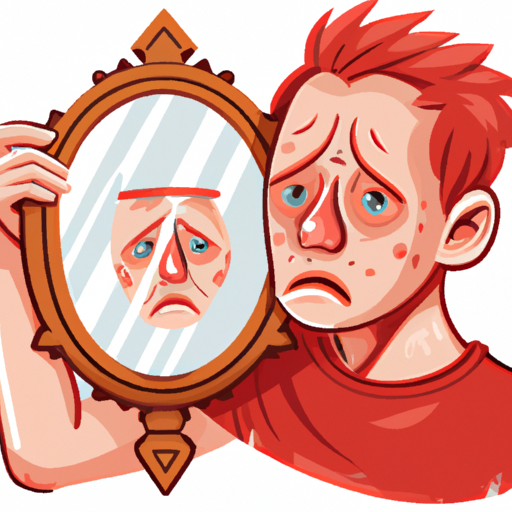
Rosacea Unveiled: Comprehensive Guide to Symptoms, Causes, Diagnosis, Treatment, and Living with the Condition
Rosacea is a chronic skin condition that affects millions of people worldwide. Characterized by redness, visible blood vessels, and sometimes pimple-like bumps, this condition can cause significant physical and emotional distress. Understanding the symptoms, causes, and diagnosis of rosacea is crucial for effective management and treatment. In this article, we will explore the various aspects of rosacea, including its symptoms, causes, and how it is diagnosed. We will also delve into the available treatment options and management strategies that can help individuals with rosacea lead a more comfortable life. Additionally, we will provide practical tips for managing the symptoms and maintaining healthy skin, enabling those with rosacea to take control of their condition and improve their quality of life.
1. Understanding Rosacea: Symptoms, Causes, and Diagnosis
Rosacea is a chronic skin condition that primarily affects the face, causing redness, visible blood vessels, and in some cases, acne-like bumps. It typically appears in individuals aged 30 to 50, and while it is more common in women, it tends to be more severe in men. Although the exact cause of rosacea remains unknown, various factors are believed to contribute to its development.
The symptoms of rosacea can vary from person to person, but the most common ones include persistent facial redness, flushing or blushing easily, visible blood vessels (telangiectasia), and a burning or stinging sensation on the skin. Additionally, some individuals may experience bumps and pimples, known as papules and pustules, respectively. In severe cases, the condition can lead to thickening of the skin, particularly on the nose (rhinophyma), and eye problems such as dryness, redness, and irritation.
While the exact cause of rosacea remains unknown, several factors have been identified as potential triggers for its development. These include genetics, abnormalities in the blood vessels of the face, a mite called Demodex folliculorum, which resides in the hair follicles, and an overactive immune system response. Additionally, certain environmental factors, such as exposure to sunlight, extreme temperatures, wind, and hot or spicy foods, have been known to exacerbate the symptoms of rosacea.
Diagnosing rosacea can be challenging as there is no specific test for it. However, dermatologists can typically diagnose the condition based on a thorough examination of the patient's medical history and physical symptoms. They may ask about any family history of rosacea, the patient's triggers, and the duration and progression of the symptoms. In some cases, a small skin biopsy may be performed to rule out other skin disorders with similar symptoms.
It is crucial to seek medical advice if you suspect you may have rosacea, as early diagnosis and treatment can help manage the symptoms and prevent further complications. While there is no cure for
2. Treating Rosacea: Effective Treatment Options and Management Strategies
Treating Rosacea: Effective Treatment Options and Management Strategies
Rosacea is a chronic skin condition that primarily affects the face, causing redness, visible blood vessels, and sometimes acne-like breakouts. While there is no known cure for rosacea, various treatment options and management strategies exist to help control the symptoms and improve the overall quality of life for those affected.
1. Topical Medications: Topical treatments are often the first line of defense in managing rosacea symptoms. These medications are applied directly to the affected skin and work by reducing redness, inflammation, and controlling acne-like breakouts. Common topical medications include metronidazole, azelaic acid, and ivermectin. These treatments are generally well-tolerated and can provide significant relief for mild to moderate rosacea symptoms.
2. Oral Medications: In cases where topical treatments alone are insufficient, oral medications may be prescribed. Antibiotics such as tetracycline, doxycycline, or minocycline are commonly used to reduce inflammation and control bacterial growth that contributes to rosacea symptoms. Isotretinoin, a powerful acne medication, can also be prescribed in severe cases. However, oral medications may have potential side effects and should be used under the guidance of a healthcare professional.
3. Laser and Light Therapies: Laser and light-based therapies have shown promising results in managing rosacea symptoms. These treatments target the blood vessels responsible for the visible redness and can help reduce their appearance. Intense pulsed light (IPL) therapy, pulsed dye laser (PDL) therapy, and vascular laser therapy are commonly used options. These procedures are typically safe, although some temporary redness or swelling may occur immediately after treatment.
4. Lifestyle Modifications: In addition to medical interventions, certain lifestyle modifications can help manage rosacea symptoms. Patients are advised to identify and avoid triggers that worsen their condition, such as spicy foods, hot beverages, alcohol, extremes of temperature, and certain skincare products. Gentle and non-ir
3. Living with Rosacea: Tips for Managing Symptoms and Maintaining Healthy Skin
Living with Rosacea: Tips for Managing Symptoms and Maintaining Healthy Skin
Living with rosacea can be challenging, as this chronic skin condition can cause discomfort and affect one's self-esteem. However, with proper management and care, it is possible to control the symptoms and maintain healthy skin. Here are some tips to help individuals navigate their daily lives with rosacea:
1. Identify Triggers: One of the most crucial steps in managing rosacea is identifying and avoiding triggers that can exacerbate symptoms. Common triggers include spicy foods, hot beverages, alcohol, extreme temperatures, sun exposure, stress, and certain skincare products. Keeping a diary to track potential triggers and reactions can be helpful in pinpointing specific culprits.
2. Gentle Skincare Routine: Maintaining a gentle skincare routine is essential for individuals with rosacea. Opt for mild, fragrance-free cleansers and moisturizers that are specially formulated for sensitive skin. Avoid using harsh exfoliants, abrasive scrubs, and products containing alcohol or strong fragrances, as these can irritate the skin and worsen symptoms. It is also advisable to use lukewarm water when cleansing the face and pat the skin dry gently with a soft towel.
3. Sun Protection: Protecting the skin from the sun is crucial for managing rosacea. Sun exposure can trigger flare-ups and worsen existing symptoms. Always apply a broad-spectrum sunscreen with a high SPF before heading outdoors, even on cloudy days. Additionally, wearing a wide-brimmed hat and seeking shade during peak sun hours can provide extra protection.
4. Manage Stress: Stress is a common trigger for rosacea flare-ups. Finding healthy ways to manage stress can help reduce symptoms. Engaging in relaxation techniques such as deep breathing exercises, yoga, meditation, or taking up a hobby can be beneficial. Regular exercise, getting enough sleep, and maintaining a balanced diet can also contribute to overall stress reduction and improved skin health.
5. Careful Makeup Choices: Individuals with rosacea may choose to use makeup to conceal redness and other symptoms.

